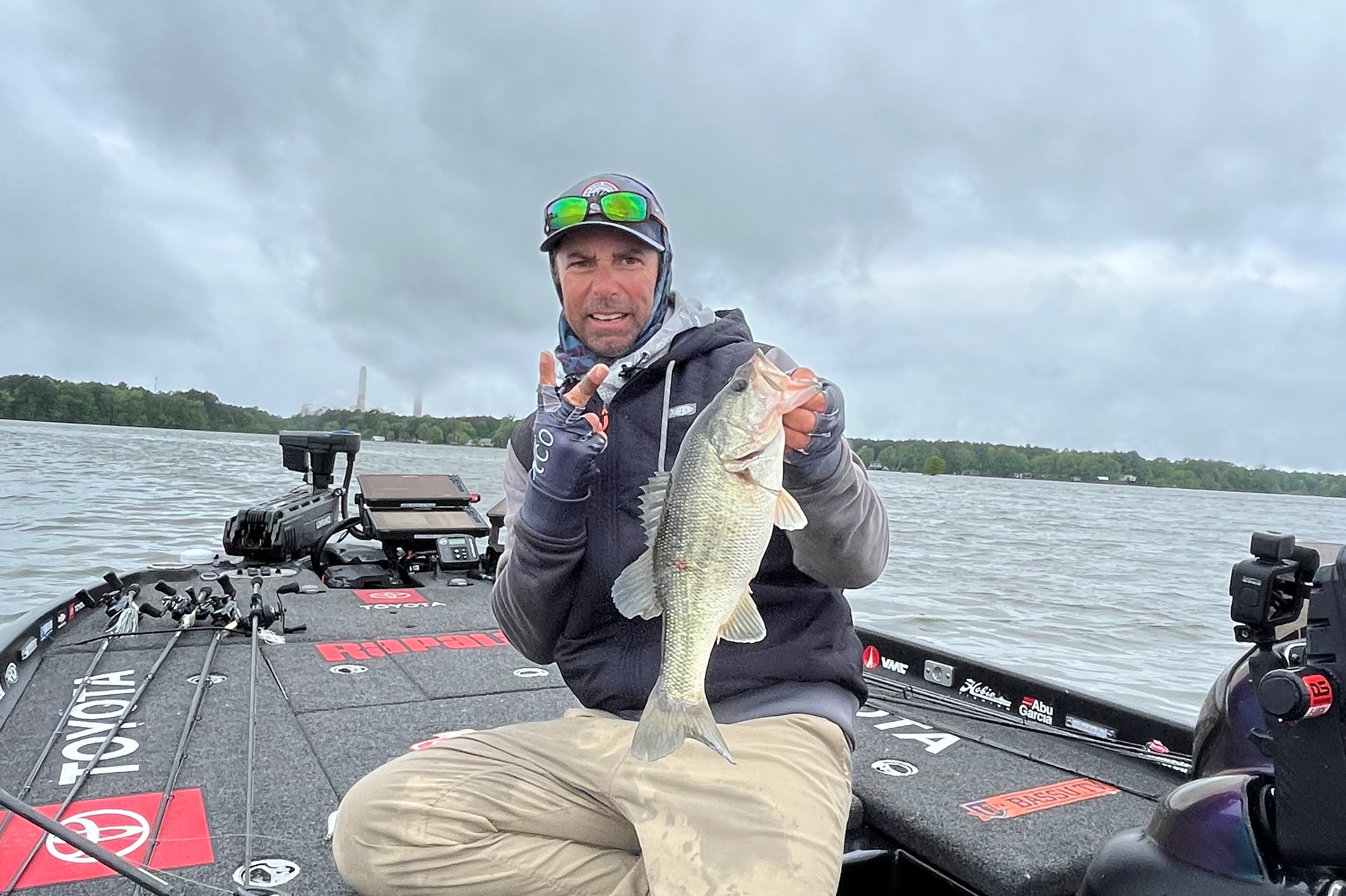
Fast-flowing water makes Mike Iaconelli awfully cranky, but only in the best sense of the word. When the Bassmaster Elite Series pro from New Jersey encounters swift current scouring a rip-rap or natural rock bank, he’ll aggressively approach a situation that most find intimidating.
In fairness, the sight of water boiling past unforgiving structure is a real brow-wrinkler. Drop your hat in the water and it’s 30 yards downstream before you can say, “Well, I dropped my hat.” Anglers seldom lose hats this way, because most avoid swift water with the mistaken notion that there is such a thing as too much current. “To think that fish won’t get in heavy current is a huge mistake, because they will,” Iaconelli says. “A lot of people look at these scenarios, and when they see the force of that flow, they simply write it off.
“I get it; that current could be moving 3 to 5 mph or greater. You look at a spot like this and you think to yourself, ‘What fish would want to sit there and constantly fight that current?’” Answer: None.
And that’s just the point: Fish don’t position in heavy current to fight it; they do so to leverage the food delivery service. “What you have to remember is that no matter how hard the current is hitting that bank, there is always a current break,” he notes. “They’re not always visible from the surface, and I think that’s why a lot of anglers write off potentially really good stretches of bank. “If you’ve got a big laydown where you can see the current pounding it and you have a little dead spot behind it, guys will fish that because it’s a visible current break. But on a straight stretch of riprap with the water rushing along it, you don’t really see the current breaks — but they’re there.”





